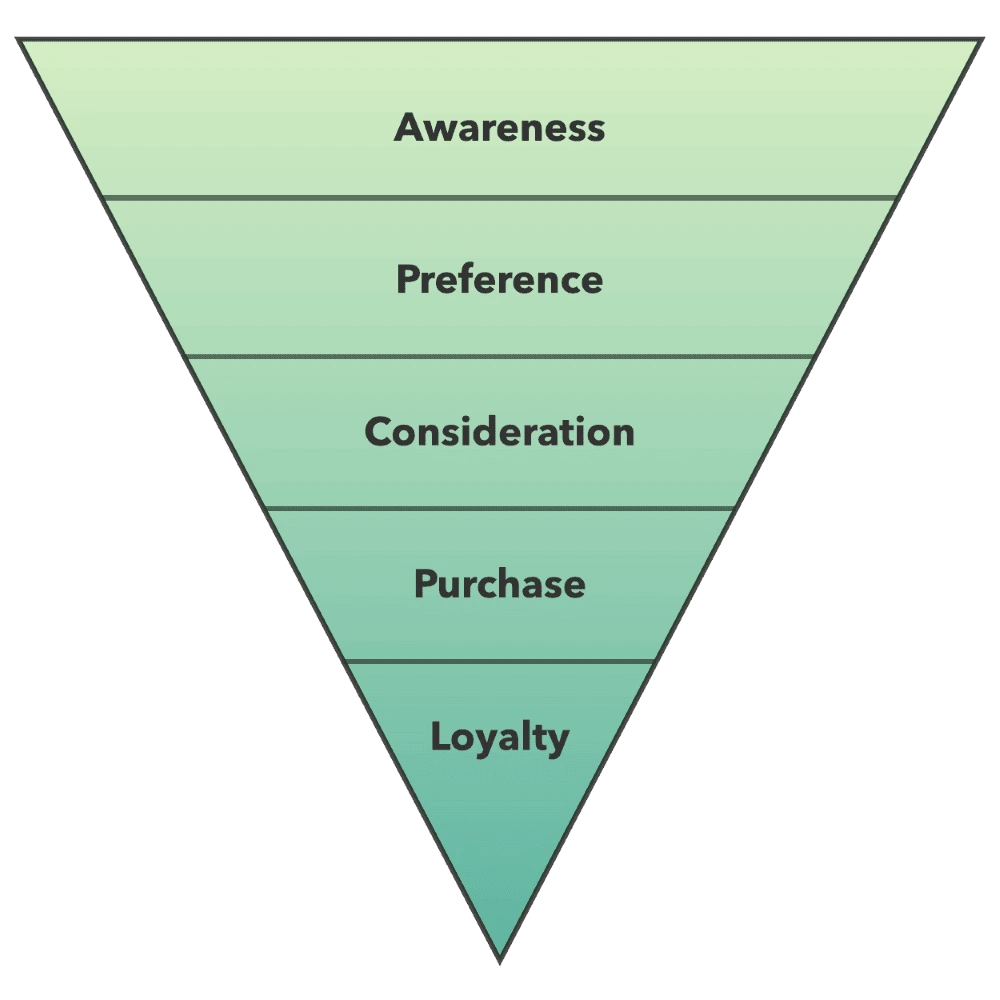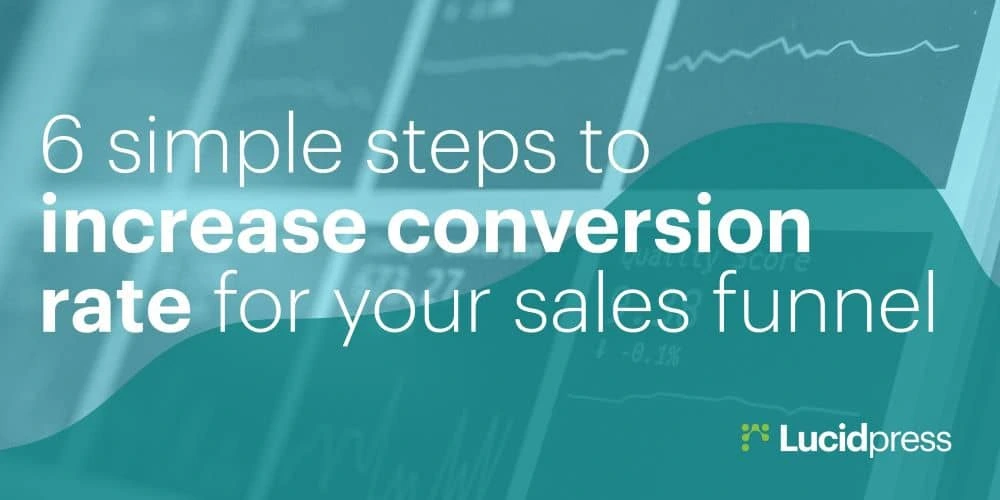When prospects enter your sales funnel, the goal is to get them to the bottom, where they turn into loyal customers. Doing this takes a lot of effort, of course, but the rewards are worth the struggle to get it right.
Related: The ultimate guide to a winning sales playbook
Before we look at ways to increase conversions at every stage of the sales funnel, we need to first establish what a sales funnel is.
What is a sales funnel?
A sales funnel is a conceptual framework used to identify the various stages a customer moves through in the process of making a purchase decision. [] The widest point is at the top, where all potential customers enter the funnel. The narrowest point is at the bottom, where customers make their final purchase decision.

Sales funnel graphic created in Lucidpress
If you want to make more sales, it’s easy to assume you need more prospects at the top of the funnel — but that isn’t always the case. A better approach would be to move more customers through each stage of the funnel, so that by the time they’re ready to convert, they already feel like a valued customer. In other words, we want to improve our conversion rates.
If we take a closer look at each stage in the funnel, we’ll be better prepared to brainstorm & implement strategies that will make every stage in the funnel more effective. Let’s dive in at the same place your customers do: the top.
Stage 1: Increasing conversions in the awareness stage
Here’s a shocker: People can’t purchase from you if they don’t know you exist. And even if they are aware of your company, they need to know they can trust you.
One way to make your brand more trustworthy is to give your audience content that shows off your thought leadership and expertise. A blog is a great channel for publishing and sharing branded content. For example, if your business sells software, your blog can give users tips and tricks on how to use it. If your business sells cars, your blog can give readers useful info about how to maintain peak performance.
There are many ways to give content to your customers, from ebooks to infographics, and you have to find the ones that work best for you. The content you publish can be about anything related to your business, your industry, or even your location. The point is to solve problems for your reader and offer your brand as a solution.
Stage 2: Increasing conversions in the consideration stage
Now that prospects are familiar with your brand, it’s time to engage them directly. The easiest way to do this is to get their email address. However, people are not always happy about handing this over, especially if they don’t get anything in return.
To make it compelling, you need to offer them a gift — one that has value to them — as a thank you for signing up to receive emails from you. Exchanging an email address for a free trial or sample is a small commitment for the customer to make, but it offers big rewards for you.
Stage 3: Increasing conversions in the preference stage
If a prospect is engaging with you, chances are that they’re interested in making a purchase but still have unresolved questions & concerns. The problem is, they won’t always share them with you, so it’s wise to pre-empt them and provide answers to the questions & concerns you hear most often.
One of the best ways to do this is to send an email that covers FAQs and encourage them to contact you if they want to know anything else. You might also consider using an email drip campaign, where customers receive a series of emails from you. Each email should bring the customer a step closer to purchasing, so that by the time the series has ended, they’re ready to buy. Sales and marketing can work together to produce compelling sales enablement materials.
Stage 4: Increasing conversions in the purchase stage
Finally, it’s time to close the sale. The most important task here is making sure your buying process is crystal clear and that customers know how to finalize their purchase.
Studies suggest that prospects have to be offered a product seven times on average before they’re ready to buy. [] But even if prospects find their way to your website, it’s not a given that they’ll come across the product you want them to buy.
If you have a product or service you want to highlight, you can use promotional pop-ups to prompt interest. This gives prospects a way to click through directly to the product, regardless of which page of your website they start from.
Stage 5: Increasing conversions in the loyalty stage
Once your customers have made a purchase from you, it’s much easier to persuade them to make another one. Now that you’ve put in all the hard work to get them to this stage, it would be a mistake to let them go.
Remember, customers are more likely to return if they’re happy with what they received the first time around. That’s why paying attention to every stage in the cycle is important. Prospects are continuously evaluating your brand on a number of fronts to gauge your credibility & professionalism:
- the consistency of your brand messaging
- the quality of your products & service
- the traits that differentiate your business from competitors
- the treatment they get from sales & customer support
If you’re delivering on all those fronts, you won’t have to try very hard to convince them to purchase from you again. Good brand experiences are powerful and memorable.
If you want to make the deal even sweeter, you can offer additional products which complement what they’ve already bought. If your product is something they’ll need to buy again, keep in touch so they know where to go when the time comes.
Stage 6: Boost productivity by using sales software
It can be difficult to keep track of where every customer is in the sales funnel, but automated software can do it for you. Any good CRM will help monitor past behavior and make suggestions based on these insights. Plus, using pipeline management software can ensure no customers slip through the cracks.
There are many other sales tools that can streamline the funnel. For example, Lucidpress can help keep your brand messaging consistent by offering your sales team a centralized place to create, customize & share sales collateral. We recently published a huge round-up of 160 sales tools that can increase your team’s productivity.
Key takeaway
Optimizing each stage of your sales funnel will lead to higher conversion rates and more closed wins. If customers trust you and are well-treated from the moment they come into contact with you, they’re more likely to become loyal customers. That means having an effective sales funnel is crucial to the growth & success of your business.



